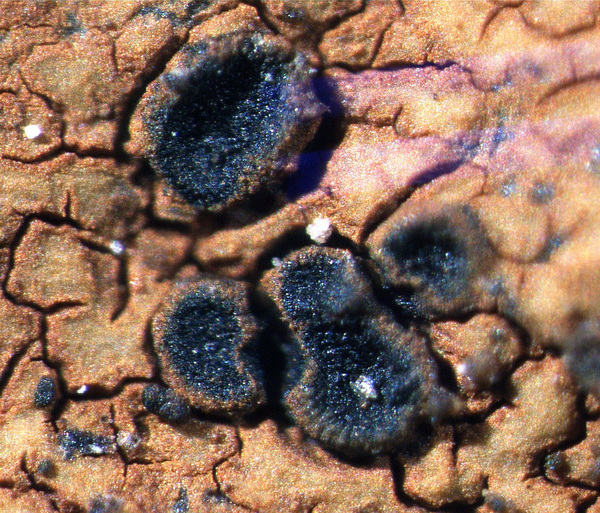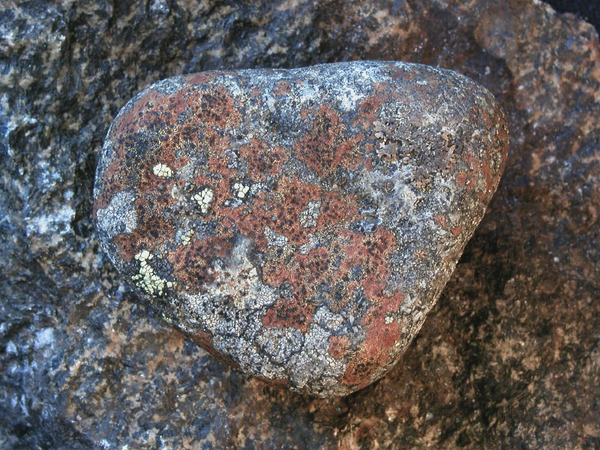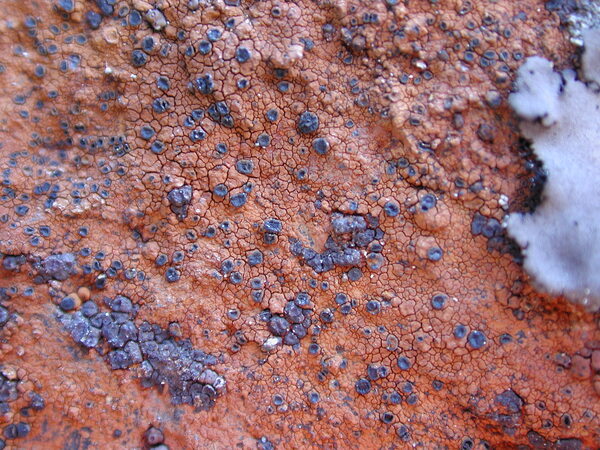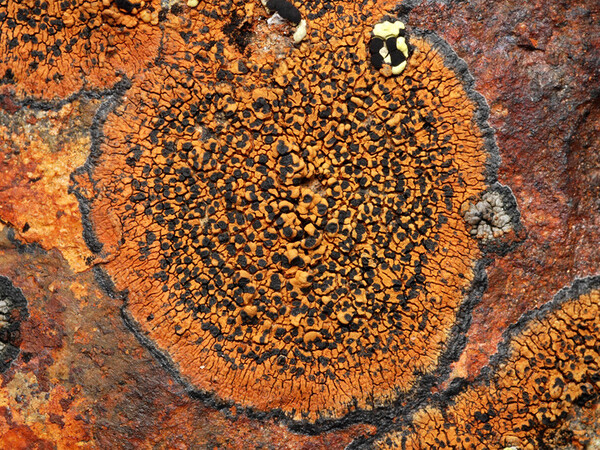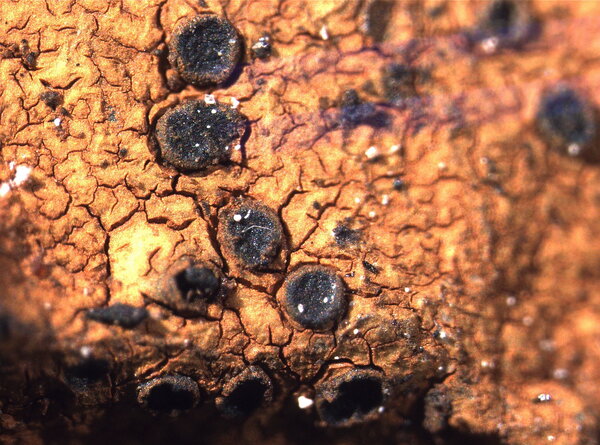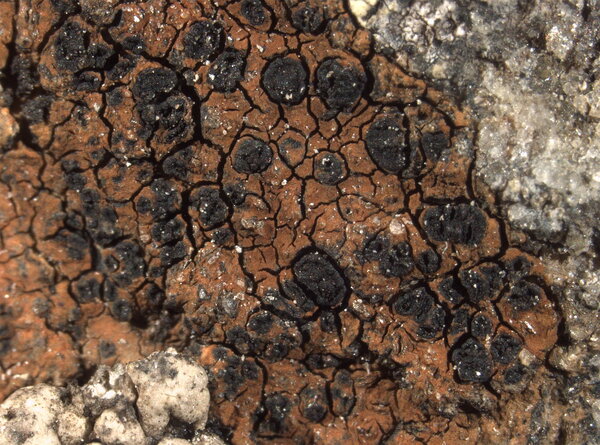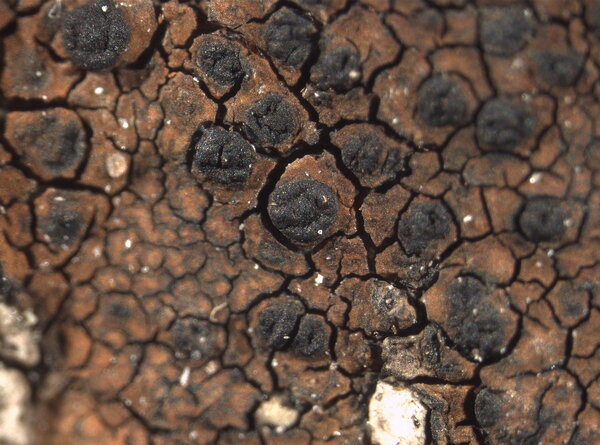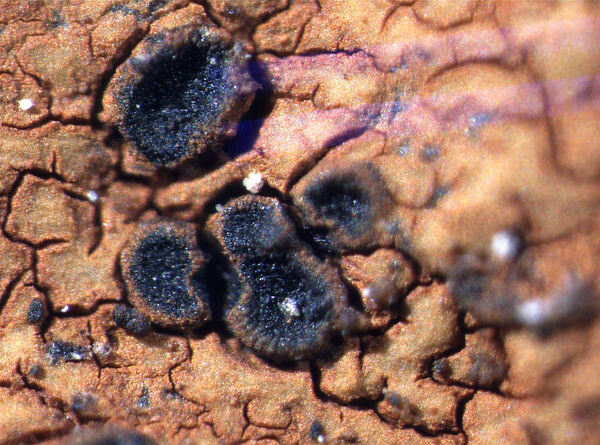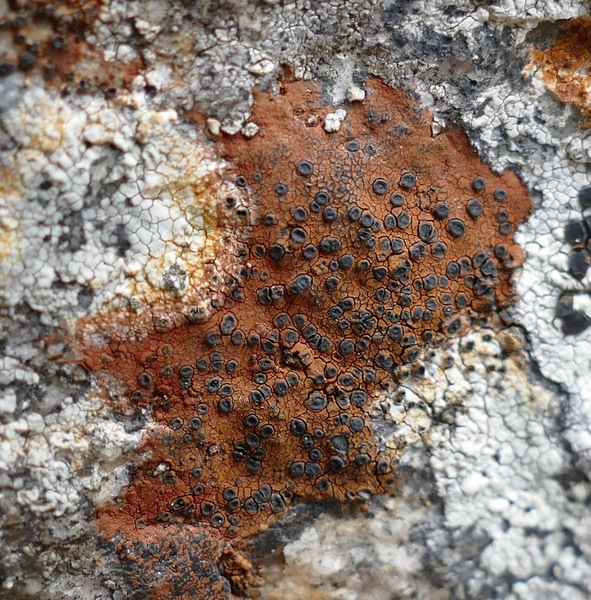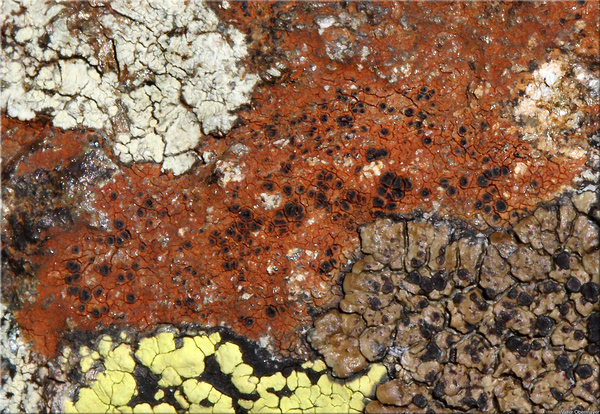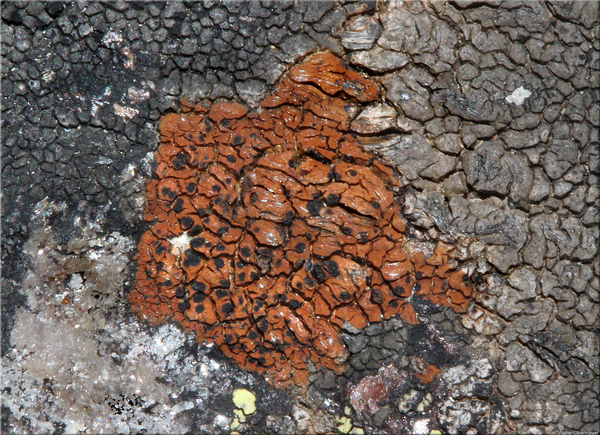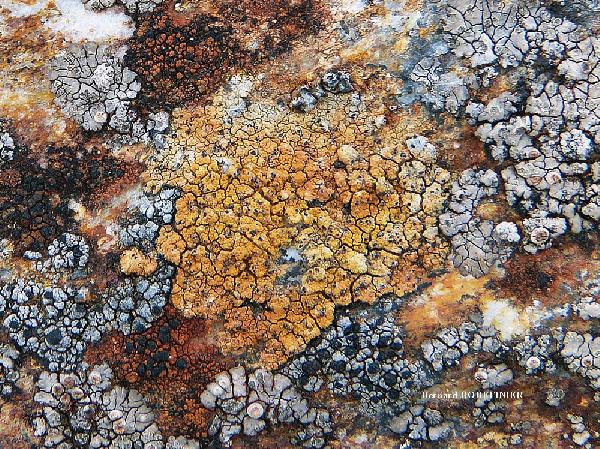Tremolecia atrata (Ach.) Hertel
Khumbu Himal, 6, 3: 351, 1977. Basionym: Gyalecta atrata Ach. - K. Vetensk.-Akad. Nya Handl., 29: 229, 1808.
Synonyms: Aspicilia dicksonii (J.F. Gmel.) Maheu & A. Gillet; Aspicilia melanophaea (Fr.) Körb.; Lecidea atrata (Ach.) Wahlenb.; Lecidea atroferrata Branth & Grønlund; Lecidea circumcisa H. Magn.; Lecidea dicksonii auct. non (J.F. Gmel.) Ach.; Lecidea lactea var. melanophaea (Fr.) Nyl.; Lecidea melanophaea Fr.; Tremolecia dicksonii (J.F. Gmel.) M. Choisy
Distribution: N - Frl (Tretiach & Hafellner 2000), Ven, TAA (Nascimbene 2003, Thor & Nascimbene 2007, Lang 2009, Hertel & Schuhwerk 2010, Nascimbene & al. 2022), Lomb (Dalle Vedove & al. 2004), Piem (Allisiardi 2001, Isocrono & al. 2003, 2004, 2006, Isocrono & Piervittori 2008), VA (Piervittori & al. 1998, 2004, Piervittori & Isocrono 1999, Isocrono & al. 2008, Favero-Longo & Piervittori 2009), Emil (Fariselli & al. 2020), Lig (Brunialti & al. 1999). C - Sar.
Description: Thallus crustose, episubstratic, continuous or more commonly of contiguous, flat, irregular, 0.1-0.5 mm wide, dark orange-red to rusty red, rarely ochraceous areoles, sometimes delimited by a thin, black prothalline line. Cortex 10-25 µm thick; medulla I-. Apothecia lecideine, round to angular in outline, 0.2-0.7 mm across, partly immersed to sessile, black, with a concave to flat, epruinose, sometimes umbonate disc and a persistent, slightly raised, sometimes wavy proper margin. Proper exciple dark brown to black, 30-80(-90) µm wide laterally, more or less friable, of radially arranged hyphae, K+ purple, extending below the hymenium; epithecium pale grey to dark grey-green, 10-15 µm thick; hymenium colourless or greenish, 65-90 µm high, I+ orange; paraphyses coherent, sparingly branched and anastomosing, 1.5-2 µm thick at base, the apical cells not or only slightly swollen, up to 2.5-3 µm wide; subhymenium colourless to pale brown, 10-40 µm high; hypothecium in continuation with the exciple, dark brown, 60-70 µm thick, K+ purple. Asci 8-spored, clavate, with a thin amyloid outer gelatinous coat, the tholus well-developed, K/I+ weakly blue, without ocular chamber and internal beak. Ascospores 1-celled, hyaline, ellipsoid, (9-)10-17 x 6-10 µm. Pycnidia black, immersed. Conidia bacilliform, 3-6 x 1-1.5 µm. Photobiont chlorococcoid. Spot tests: K-, C-, KC-, P-, UV-. Chemistry: an unidentified rust-coloured pigment in the cortex.Note: a species widespread in cool to cold areas of both Hemispheres, found on hard magmatic and metamorphic rocks, often rich in iron, mostly on small boulders in upland areas; widespread and locally common in the Alps, much rarer along the Apennines and in the Mediterranean mountains.
Growth form: Crustose
Substrata: rocks
Photobiont: green algae other than Trentepohlia
Reproductive strategy: mainly sexual
Species of metal-rich rocks
Pioneer species
Commonnes-rarity: (info)
Alpine belt: very common
Subalpine belt: common
Oromediterranean belt: extremely rare
Montane belt: very rare
Submediterranean belt: absent
Padanian area: absent
Humid submediterranean belt: absent
Humid mediterranean belt: absent
Dry mediterranean belt: absent

Predictive model
Herbarium samples


P.L. Nimis; Owner: Department of Life Sciences, University of Trieste
Herbarium: TSB (9468)
2001/12/01
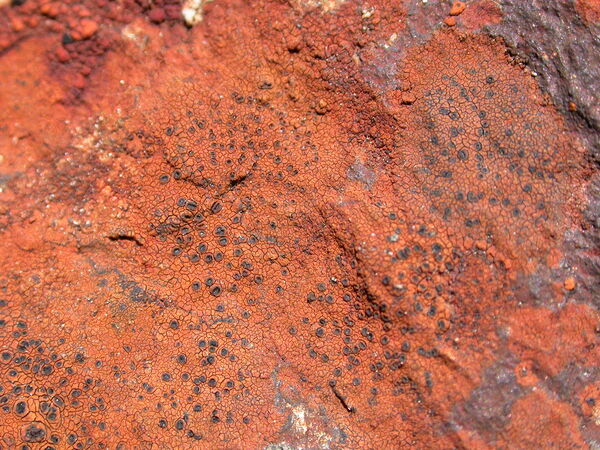

Juri Nascimbene - CC BY-SA 4.0
Stelvio National Park, Reg. Trentino-Alto Adige Prov. Trento, Italy.
07.2005
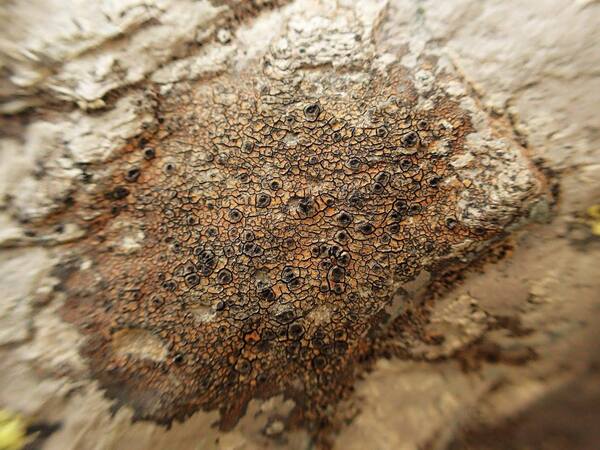

Curtis Randall Björk, - CC BY-SA 4.0
Sugarbowl-Grizzly Den Provincial Park, British Columbia, Canada
August 2017
as v. tilesii


P.L. Nimis; Owner: Department of Life Sciences, University of Trieste
Herbarium: TSB (9468)
2001/12/01
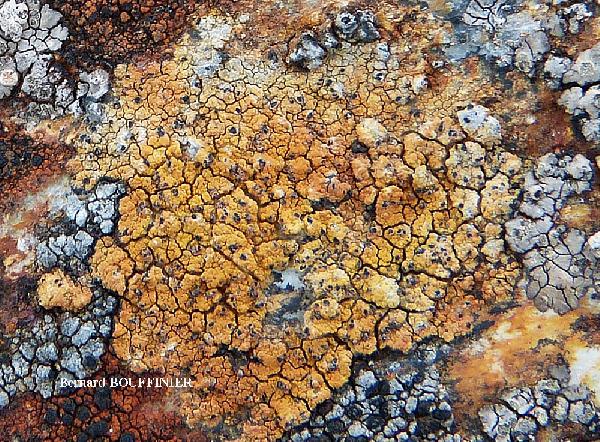
Bernard Bouffinier - Source: http://www.lichensmaritimes.org/index.php?task=fiche&lichen=414&lang=en
France, Commana
Growth form: Crustose
Substrata: rocks
Photobiont: green algae other than Trentepohlia
Reproductive strategy: mainly sexual
Species of metal-rich rocks
Pioneer species
Commonnes-rarity: (info)
Alpine belt: very common
Subalpine belt: common
Oromediterranean belt: extremely rare
Montane belt: very rare
Submediterranean belt: absent
Padanian area: absent
Humid submediterranean belt: absent
Humid mediterranean belt: absent
Dry mediterranean belt: absent

Predictive model
| Herbarium samples |


P.L. Nimis; Owner: Department of Life Sciences, University of Trieste
Herbarium: TSB (9468)
2001/12/01


Juri Nascimbene - CC BY-SA 4.0
Stelvio National Park, Reg. Trentino-Alto Adige Prov. Trento, Italy.
07.2005


Curtis Randall Björk, - CC BY-SA 4.0
Sugarbowl-Grizzly Den Provincial Park, British Columbia, Canada
August 2017
as v. tilesii


P.L. Nimis; Owner: Department of Life Sciences, University of Trieste
Herbarium: TSB (9468)
2001/12/01

 INDEX FUNGORUM
INDEX FUNGORUM
 GBIF
GBIF
 DOLICHENS
DOLICHENS
